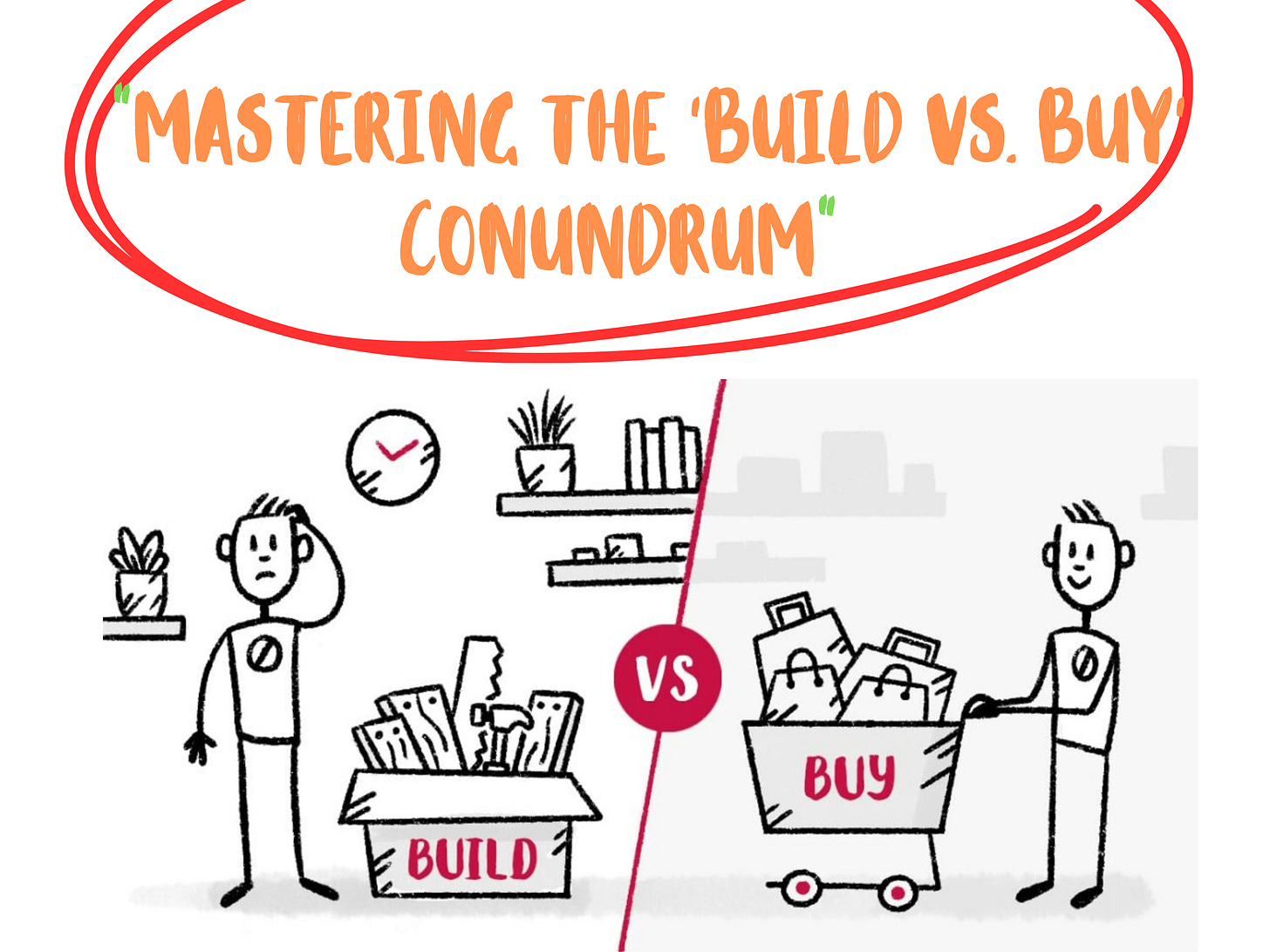Week 44 - Mastering the '🚧 Build vs. 🛒Buy' Conundrum: A Comprehensive Guide for Product Managers
Quote
“The 'build vs. buy' decision is not just about cost or capabilities. It's a strategic choice that shapes the future of your product, impacts your competitive positioning, and ultimately, defines your ability to serve your customers effectively.”
Poll
💯 Framework // Concept // Mental Model
Every product manager is tasked with making significant deci…
Keep reading with a 7-day free trial
Subscribe to The Product Channel By Sid Saladi to keep reading this post and get 7 days of free access to the full post archives.


